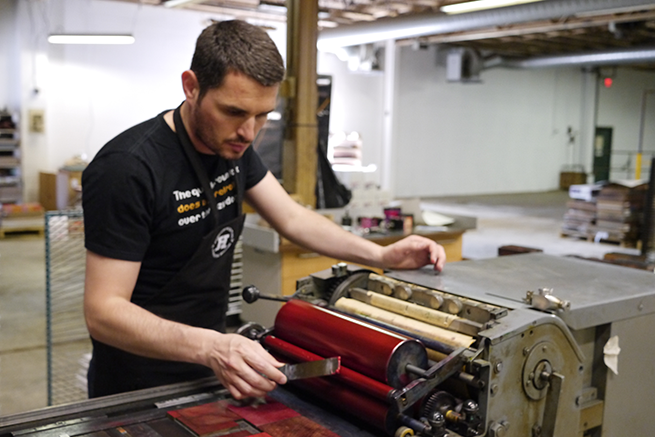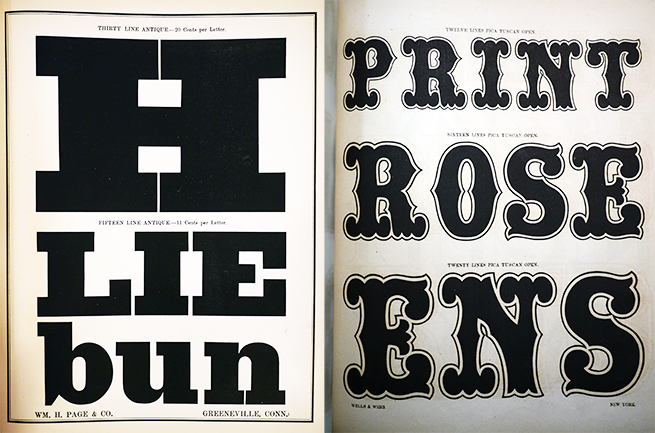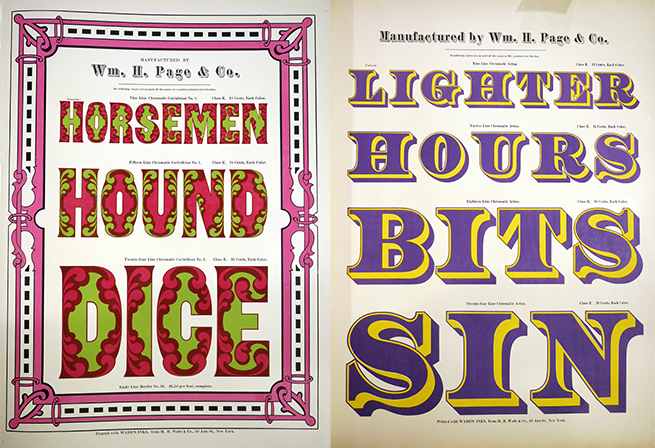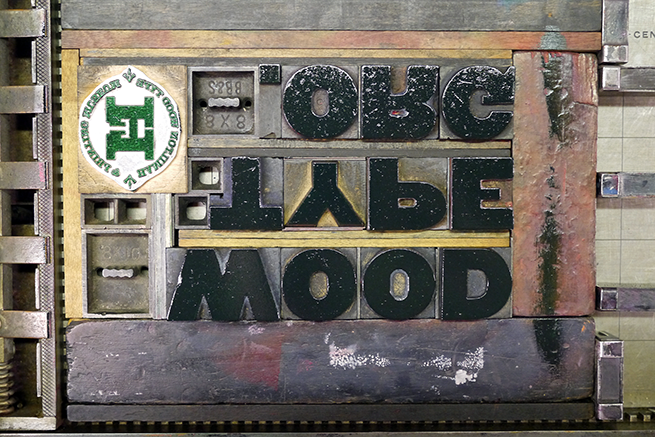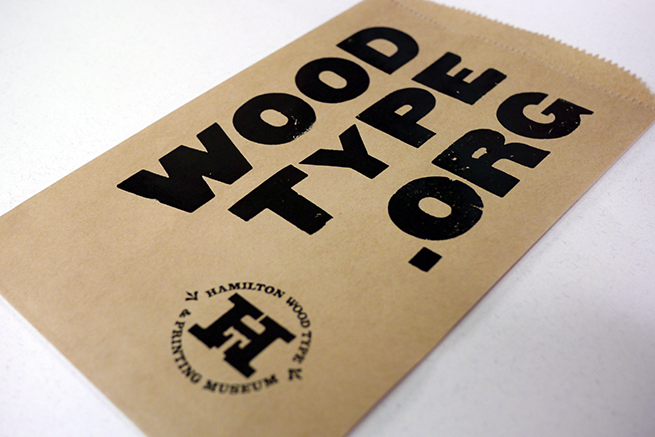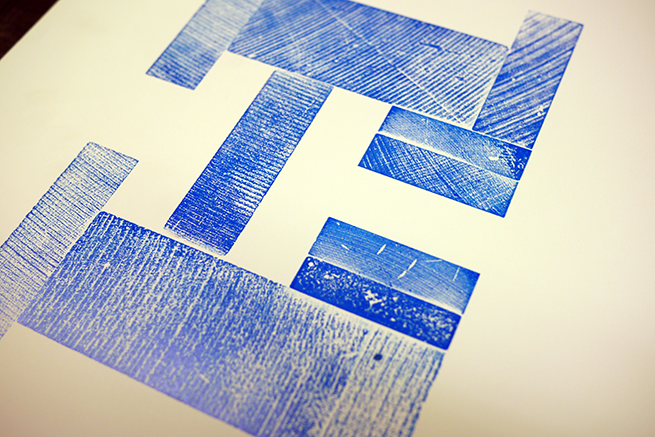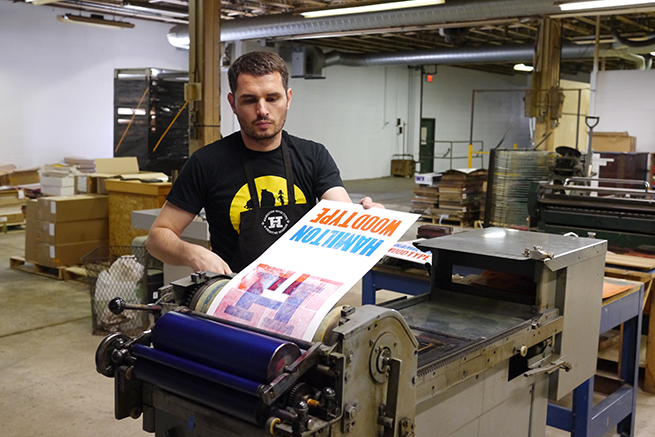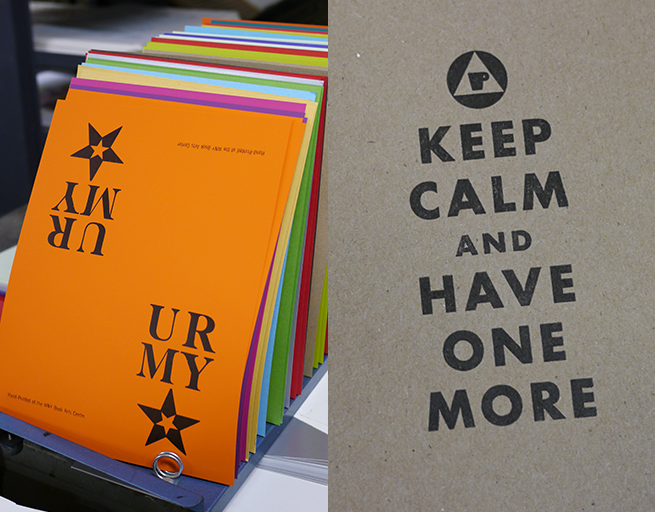Adventures in Wood Type: Miguel Sousa lends a helping hand (or two) to the Hamilton
One of the perks Adobe offers to its employees is paid sabbatical leave every five years. Going on sabbatical—taking a strategic pause from the everyday work routine—provides boundless opportunities for in-depth research, broadening skills, and recharging mental batteries.
A native of Portugal, Miguel Sousa began his career with Adobe in 2006, after graduating from the MA Typeface Design program at the University of Reading in the United Kingdom. When it came time to take his first sabbatical, he considered a number of options. He knew he wanted to challenge himself, enrich his practical education, and give something back.
In the summer of 2012, Miguel attended the TypeCon conference held in Milwaukee, Wisconsin. As a prelude to the main event, he participated in an intensive letterpress workshop held at the Hamilton Wood Type and Printing Museum, located in the little town of Two Rivers, about 90 miles north of Milwaukee. The museum, a non-profit, volunteer-driven labor of love, houses a collection of more than 1.5 million pieces of wood type.
“That was my first contact with the museum, and it was amazing to see that much wood type in one place,” Miguel said. “That was not the first time I did letterpress, but it was a little bit of a renaissance to me. It reminded me of how fun it was.”
After the workshop, Miguel attended a presentation by Jim and Bill Moran, Hamilton directors, where they spoke about the rich history of the museum and the efforts to continue its existence. The Hamilton had long been faced with the difficulties inherent in maintaining such a vast historical collection with limited financial and human resources, and creative fundraising was key to its survival.
Richard Kegler, founder of P22 type foundry and the Western New York Book Arts Center (WNYBAC) in Buffalo, partnered with the Hamilton in a new project designed to raise funds for the museum and bring wood type into contemporary use. In the fall of 2012, they launched the Hamilton Wood Type Foundry (HWT), dedicated to reviving wood type designs into digital fonts for contemporary use.
“It seemed such a wonderful project, not just because it was making all those designs available to new technology graphic designers can use,” Miguel said. “But it was also the aspect of making those designs available to help raise funds for the museum that was very interesting to me.” Miguel wanted to be part of the project and offered to donate his time and expertise.
Working with Rich Kegler, Miguel settled on a typeface design to revive for HWT, and decided to devote his sabbatical to the project. After conducting a great deal of research online, buying orphaned wood type on eBay, and poring over specimens, he made plans to travel around the US and delve deeper into the history of the wood type he fell in love with.
Miguel’s sabbatical became even more critical when the Hamilton Museum was asked to leave its namesake building last fall, forcing the staff to find a new space and move tons of wood type and printing equipment. Money and manpower were sorely needed, and friends from all over the world pitched in to help with fundraisers. (The Adobe Type Team happily pitched in with their famous Cupcakes-in-a-Jar event!) When the Hamilton crew found a new building, Miguel was determined to be on hand to help them settle in.
In June of this year, Miguel started his journey with a stop in Chicago, where he spent time at the Newberry Library, which houses an amazing collection of antique type specimens and other delights. Paul Gehl, curator of rare books and custodian of the printing history wing, provided guidance during Miguel’s quest for examples of the type he was reviving.
“I spent a couple of days there and barely put a dent on their long list of items. I was particularly interested in wood type specimens, and let me tell you, they didn’t disappoint,” Miguel said. “I saw series of gorgeous pages, one after another. The level of craftsmanship of the type but also of the printing was mind blowing. One hundred percent eye candy!”
From Chicago, Miguel made his way north to Two Rivers to help the Hamilton team as they began the monumental task of unpacking and organizing in their new location.
With other volunteers, Miguel was part of an enthusiastic crew that swept and scraped floors, unwrapped and moved pallets, and unboxed and distributed mountains of type. By the end of day two of Miguel’s visit, the office and shop spaces were clean, and the print shop area was in order.
“This latter milestone was fundamental for the work I did afterwards,” Miguel said. “While the rest of the volunteers stayed only during the weekend, I remained in Two Rivers the following week to further help out at the museum.”
Miguel assumed that he would keep cleaning and unpacking, but Stephanie Carpenter, the Hamilton’s Assistant Director, had other ideas. The HOW design conference was a few days away, and the museum team would be speaking. They needed to quickly print some promotional pieces for the event, and put Miguel to work on the press.
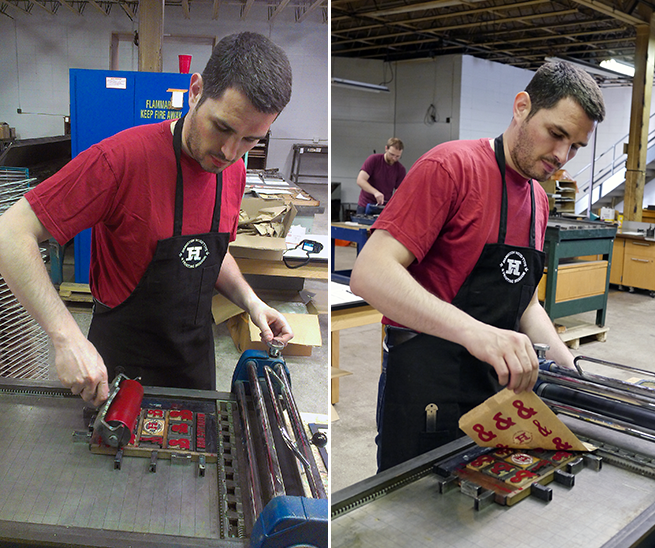
“I did quite a bit of printing,” Miguel said. “Stephanie helped me figure out how to set up type on the printing beds, how you’re limited to type you have in shop for sizes and design. It’s kind of like you have a concept, and that concept may have to change if you see things are not working, or if you don’t have enough type to compose it, or the type’s too big or too small.”
“The week went really well,” Miguel said. “I think she realized I was organized and I was motivated. She just kept giving me stuff to do, and I was very happy about that.”
During his last couple of days at the Hamilton, Miguel talked with Stephanie about designing a poster to benefit the museum. With the Fourth of July just around the corner, he printed a poster in red and blue, constructing the Hamilton logo out of the backs of wood type blocks. (The poster is currently available in the museum’s store in a limited edition.)
Bidding farewell to the Hamilton, Miguel headed south to St. Louis, where he spent a successful week visiting print shops, with his friend Ben Kiel, in search of type specimens for his project. He then traveled to Buffalo to work with Rich Kegler at WNYBAC. While there, Miguel had the opportunity to study and print from the actual wood typeface at the center of his HWT project. He also donated time printing and helping out around the center while they went through a financial rough spot.
While in New York, Miguel also visited the Cary Graphic Arts Collection at the Rochester Institute of Technology (RIT), where Assistant Curator Amelia Hugill-Fontanel gave Miguel access to more rare wood type and printed specimens.
Leaving Buffalo, Miguel returned home with plenty of memories and material to aid him in working on his benefit typeface for HWT. While on the road, it really hit home with him what a struggle it is for cultural institutions to survive in the current economic climate.
“I saw that [these organizations] had the drive to raise some money. It was another component to why I wanted to go to these places,” Miguel said. “I wanted to see their collections, use them as much as I could, and then contribute back.”
One of Miguel’s primary goals during his sabbatical was to spend time working with the people behind the scenes, the ones who keep these initiatives going, and to help in any way he could. By donating his time and making financial contributions, he was able to take advantage of Adobe’s grant-matching program, where the company will match employee donations made to nonprofits.
His sabbatical “officially” over, Miguel plans to keep giving back to these and other cultural organizations so that they might continue to educate and inspire others far into the future.
To see more photos from Miguel’s sabbatical, visit Adobe Type’s Flickr set.
PS: Miguel also had the opportunity to share a bit of his story with two reporters from the Wisconsin State Journal, who visited the Hamilton Wood Type & Printing Museum while he was there. The article is available in the newspaper’s website.
